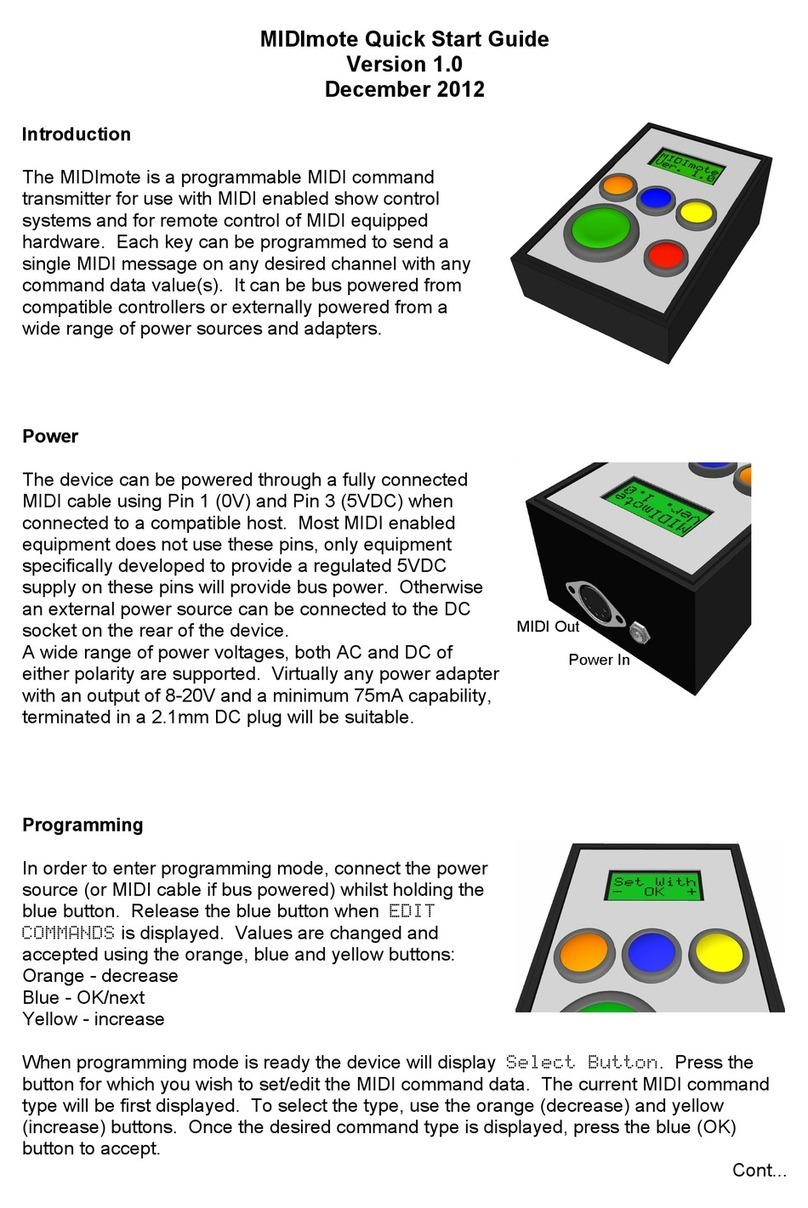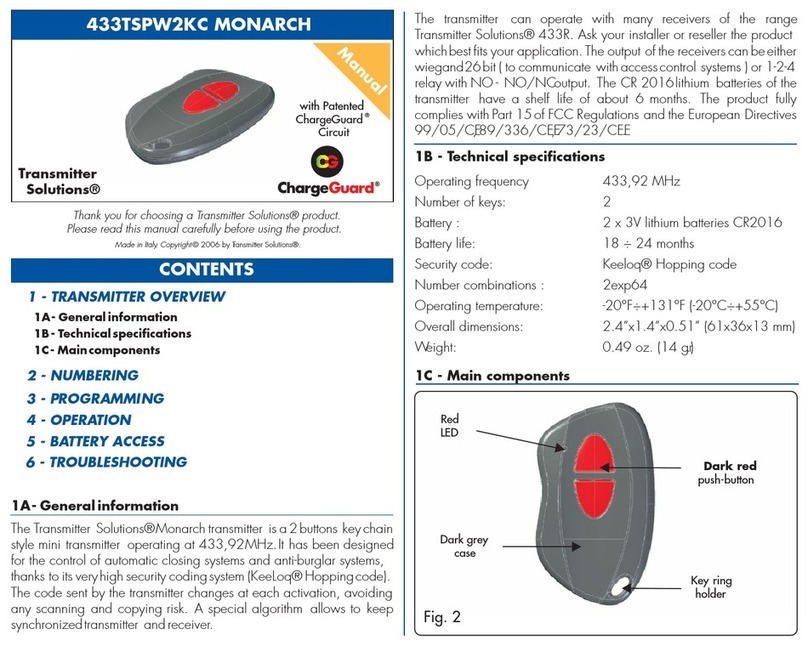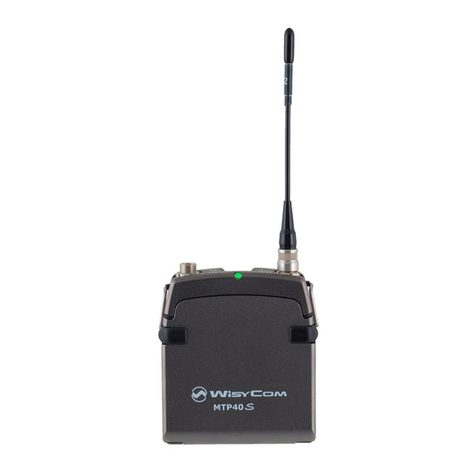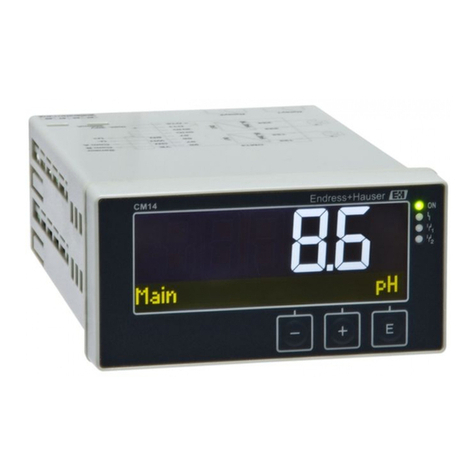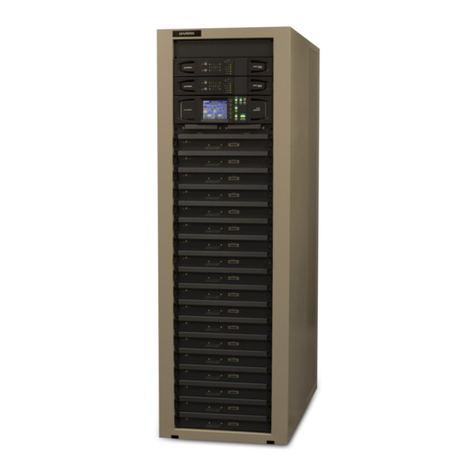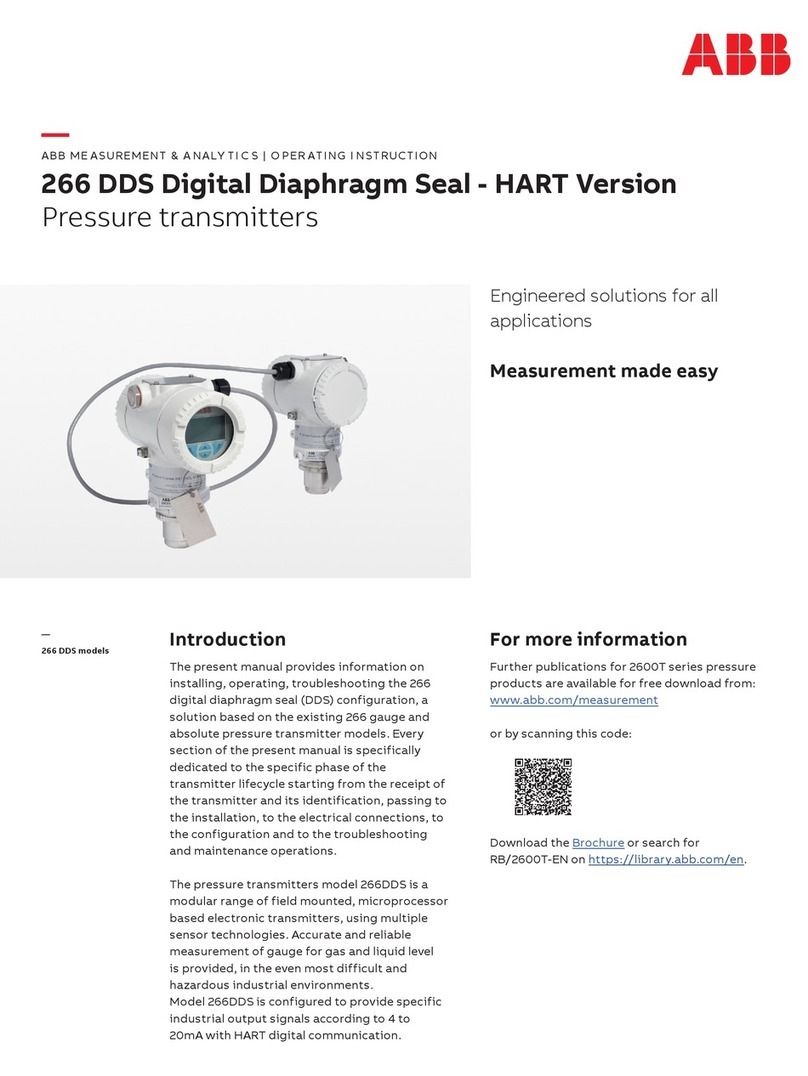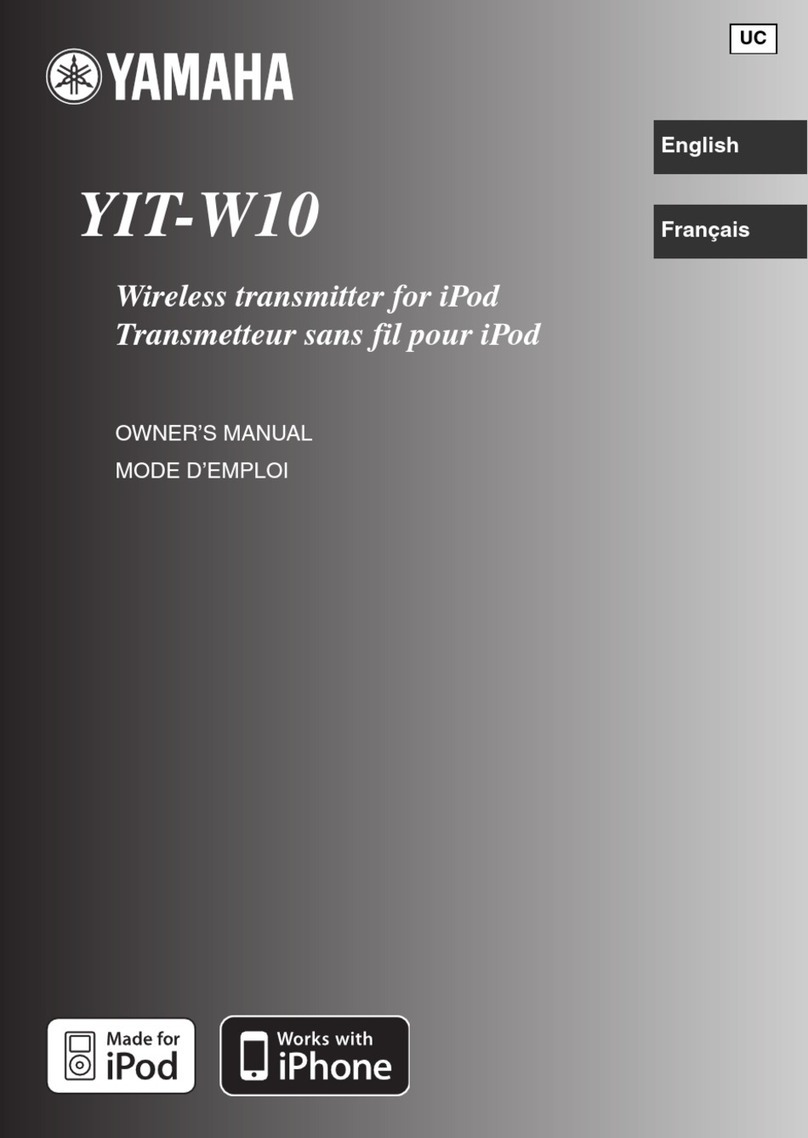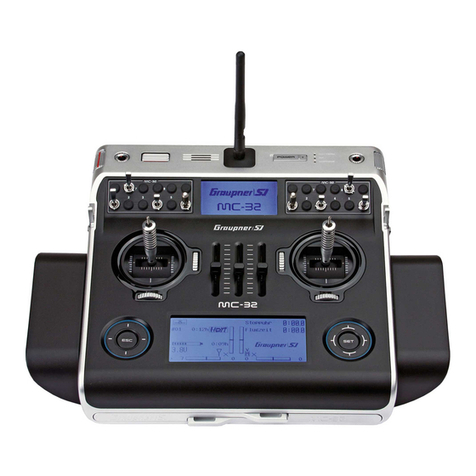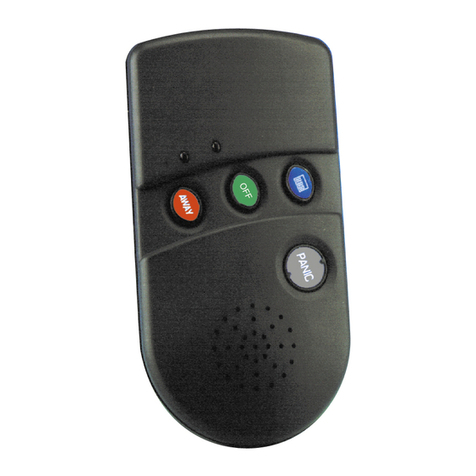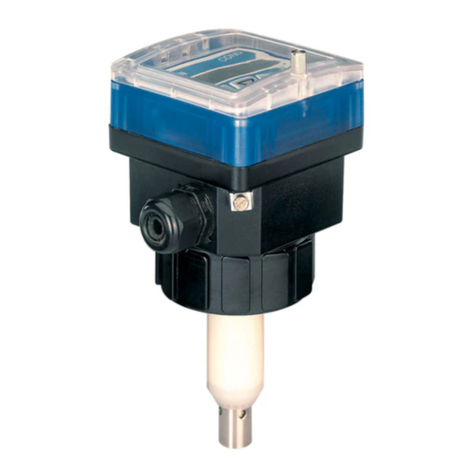MR MESSKO ZT-F2.1 User manual

BA2526030/03PT-EN
MESSKO®ZT-F2.1
SENSOR DE TEMPERATURA DO TRANSFORMADOR
TRANSFORMER TEMPERATURE TRANSMITTER
Instruções de serviço / Operating Instructions

BA2526030-03
2

BA2526030-03
3
Índice/Contents
Índice
1 Segurança .................................4
1.1 Instruções de Segurança......................4
1.2 Aplicação especificada .......................4
1.3 Notas Importantes sobre a operação
de aparelhagem.............................4
2 Especificação de Produto .....................4
3 Condições de Instalação e verificação ...........5
4 Termómetro ................................5
5 Montagem .................................5
5.1 Montagem do transmissor de temperatura
de transformador ZT-F2.1.....................5
5.2 Instalação do bolbo da temperatura do
termômetro ................................6
6 Ligação Eléctrica ........................... 6
6.1 Ligação do transformador de corrente...........6
6.2 Resistencia de medida Pt100 ..................6
6.3 Opção: Transdutor 4...20 mA ..................6
7 Parametrização do hotspot ...................7
7.1 Parametrização para um TI de 2 A de
corrente nominal ...........................7
7.2 Parametrização para um TI diferente de 2 A
de corrente nominal .........................7
8 Verificação do mostrador .....................8
9 Serviço ....................................8
10 Manutenção ...............................8
11 Protecção de sobretensão .....................8
12 Dados Técnicos .............................8
13 Apêndice .................................16
13.1 Dimensões ................................16
13.2 Planilha de gradiente de temperatura
para corrente nominal de 2 A CT ..............17
13.3 Sensor substituto (acessório) .................20
Guardar para uso futuro!
Contents
1Safety....................................10
1.1 Safety instructions .........................10
1.2 Specified application........................10
1.3 Important notes on equipment operation .......10
2 Product specification. . . . . . . . . . . . . . . . . . . . . . . .10
3 Installation conditions and testing ............11
4 Dial-type thermometer ......................11
5 Assembly .................................11
5.1 Assembling the ZT-F2.1 transformer temperature
transmitter................................11
5.2 Installing the temperature bulb of the dial-type ...
thermometer ..............................11
6 Electrical connection........................12
6.1 Connecting the current transformer ...........12
6.2 Pt100 measuring resistor ....................12
6.3 Option: Analog output 4...20 mA..............12
7 Setting the hot-spot gradient ................12
7.1 Setting for 2 A CT nominal current ............12
7.2 Setting for CT nominal current ≠2 A ..........13
8 Checking the display........................14
9 Service ...................................14
10 Maintenance ..............................14
11 Overvoltage protection ......................14
12 Technical data .............................14
13 Appendix ................................16
13.1 Dimensions ...............................16
13.2 Hot-spot gradient table for 2 A CT nominal
current...................................17
13.3 Replacement sensor ........................20
Please keep this manual for future reference!
NOTA
As informações contidas nestas instruções de serviço
podem ser diferentes daquelas relativas ao aparelho
fornecido.
Reservado o direito a modificações.
NOTE
Data contained herein may differ in details from the
equipment delivered.
We reserve the right to make alterations without notice.

BA2526030-03
4
1 Segurança
1.1 Instruções de segurança
Todo o pessoal envolvido em instalação, colocação em serviço,
operação, manutenção e reparação do aparelho têm de:
– ter qualificação técnica suficiente e
– observar cuidadosamente estas instruções de serviço.
A operação errada ou utilização indevida representam um risco
– de lesões corporais e de morte
– para o próprio aparelho e outros bens materiais da instala-
ção e
– para o funcionamento eficaz do aparelho.
Três tipos de notificações de segurança são usados nesta instru-
ção de serviço a fim de evidenciar as informações importantes.
1.2 Aplicação especificada
O transmissor de temperatura de transformador tipo ZT-F2.1
somente pode ser utilizado em combinação com um termô-
metro indicador da série TRASY2 ou sem termômetro, somente
com um sensor substituto (acessório). É usado para apresentar
a temperatura do hot-spot no transformador.
É importante ler e observar os valores do limite para a ope-
ração indicada sobre a placa identificadora e nas instruções
operacionais antes de colocar em serviço o dispositivo.
1.3 Notas Importantes sobre a operação de aparelhagem
O utilisador é aconselhado a cumprir estritamente com os
regulamentos de prevenção de acidente nacionais.
Os trabalhos em partes sobre tensão, i.e. partes com as quais
todo o contacto é perigoso, só são permitidos se essas partes
não estão energizadas ou se estão protegidas contra contactos
diretos. Aquando da realização da instalação elétrica devem ser
observadas as prescrições nacionais correspondentes.
1 Segurança
2 Especificação de Produto
AVISO
se utiliza para chamar a atenção para os perigos especí-
ficos de lesões corporais e de morte. O não respeitar das
indicações pode conduzir a lesões graves ou mortais.
ATENÇÃO
se utiliza para chamar a atenção para os perigos para o
aparelho ou para outros bens materiais da instalação.
Riscos potenciais de lesões corporais e de morte não estão
excluídos.
NOTA
indica informações importantes sobre uma temática
especifica.
A instalação eléctrica está sujeita aos regulamentos de segu-
rança nacionais pertinentes. É imperativo ligar o cabo de fio
terra a fim de assegurar a operação sem problemas.
2 Especificação de Produto
O transmissor de temperatura de transformador tipo ZT-F2.1
somente pode ser utilizado em combinação com um termômetro
indicador da série TRASY2 ou sem termômetro, somente com
um sensor substituto (acessório). É usado para apresentar a
temperatura do hot-spot do transformador.
A temperatura do enrolamento é medida indiretamente. O
gradiente de temperatura entre o enrolamento (hotspot) e o
líquido refrigerante é dependente do corrente no enrolamento:
A corrente no secundário do transformador de medida é
proporcional à corrente no enrolamento do transformador. A
corrente secundária do transformador de medida alimenta a
resistencia de aquecimento no transmissor de temperatura do
transformador ZT-F2.1. Isto induz a um aumento de indicador
a adaptar-se à carga de transformador (isto é, temperaturado
hot-spot) na temperatura de óleo realmente medida.
A temperatura do enrolamento é simulada no ZT-F2.1. O
gradiente da temperatura do hotspot à temperatura da camada
AVISO
Todos os regulamentos de proteção de contra incendio
pertinentes devem ser estritamente observados.
ATENÇÃO
Vistos que os instrumentos de medida são sensíveis, todas
as partes deveriam ser protegidos contra queda, batidas e
vibração.
Assegure-se que a máxima temperatura do ambiente não
seja acima de 85 °C. O transmissor de temperatura de
transformador ZT-F2.1 não suporta o seu peso.
ATENÇÃO
A instalação, conexão eléctrica, colocação em serviço e
manutenção podem somente ser feitos por pessoal técnico
qualificado e somente de acordo com estas instruções
operacionais.
É a responsabilidade do utilisador assegurar-se que o dispo-
sitivo seja utilizado somente para a aplicação especificada.
Por razões de segurança, qualquer trabalho não autorizado
e executado impropriamente, isto é instalação, modifi-
cação, mudança da aparelhagem, de conexão, ou eléctrico
de colocação em serviço da aparelhagem, é proibido sem
primeiro consultar a Messko!

BA2526030-03
5
3 Condições de Instalação e verificação
4 Termómetro
5 Montagem
Fig. 1
superior de óleo a carga nominal é definido por interruptores
DIP. A temperatura do enrolamento é mostrada mecanicamente
no display do termômetro, cujo detector de temperatura é
incorporado no ZT-F2.1 ou sem termômetro, somente com um
sensor substituto (acessório). O valor medido pode também
ser transferido a uma bobine ou display digital, por exemplo,
através do resistência Pt100 instalada ou a uma saída analógica
de 4...20 mA.
3 Condições de Instalação e verificação
O transmissor de temperatura de transformador ZT-F2.1 é pro-
jetado de ser instalado num bolso de termômetro tipo A1 DIN
EN 50216-4. Outros bucins roscados estão disponíveis como
opções. A bolsa de termômetro deve ser situada na tampa do
transformador perto do local onde o fluxo de óleo é maior.
Isto assegurará uma troca de calor satisfatória entre o líquido
refrigerante, bolsa de termómetro e os sensores de temperatura
no ZT-F2.1. Para a transferência correta do calor, a bolsa de
termômetro deve estar preenchida com aprox. 50 ml de óleo à
temperatura ambiente (não utilizar papel alumínio nem
materiais semelhantes). A temperatura de área de calor pode
não ser indicada exatamente se estes pré-requisitos não são
encontrados. Se você quer testar o transmissor de temperatura
de transformador ZT-F2.1 antes de instalá-lo sobre o trans-
formador, você deve criar as mesmas condições na situação
de prova como acontecem sobre o transformador (ver "Testar
condições" abaixo.)
Condições de teste
1. Movimento controlado do banho de óleo.
2. O bolso de termómetro instalado no banho de óleo.
3. Bolso de termómetro está preenchida com aprox. 50 ml de
óleo à temperatura ambiente.
4. ZT-F2.1 instalado no bolso de termómetro.
5. O Pt100 ou 4...20m A saída analógica (opcional) ligado
(consulte capítulo 6.2/6.3.) Insira o sensor do termómetro
até que pare (approx. 215 mm.)
6. A temperatura de banho não deveria exceder 30 °C, ou o
calor emitido através do fio distorceria as condições do
transformador.
7. Permita ao sensor adaptar-se à temperatura de banho por
pelo menos 30 minutos.
8. O ciclo de medida até a temperatura em que o salto é alcan-
çado deve demorar pelo menos 20 minutos.
4 Termómetro
O ZT-F2.1 pode ser combinado com varios tipos de termometro
e instrumentos de análise. Siga sempre as instruções providen-
ciadas quando instalar tais instrumentos. Ao instalar um sensor
substituto, observe o capítulo 5.2.
5 Montagem
5.1 Montagem do transmissor de temperatura de transfor-
mador ZT-F2.1
O transmissor de temperatura de transformador ZT-F2.1 é
projetado de ser instalado num bolso de termômetro tipo A1
DIN EN 50216-4.
Encha o bolso de termómetro com aprox. 50 ml de óleo à tem-
peratura ambiente. Para montar, atarraxe a porca de baixo da
junta dupla (figura 1, artigo 4) na bolsa de termómetro. Insira e
endireite o tubo de imersão (figura 1, artigo 5) do transmissor
de temperatura de transformador ZT-F2.1. Aperte o fio duplo
(figura 1, artigo 3.)
ATENÇÃO
Os requisitos de operação e instalação descritas neste
manual devem ser estritamente cumpridas. Senão, o
dispositivo pode ser estragado ou pode funcionar mal.
ATENÇÃO
Nunca encha o transmissor de temperatura de transfor-
mador ZT-F2.1 de óleo. Somente a bolsa de termómetro
deveria ser enchido de óleo.
ATENÇÃO
Não aplique força para virar o transmissor de temperatura
de transformador ZT-F2.1. Em vez disso afrouxe o fio duplo!

BA2526030-03
6
– Técnica de 3 condutores
O instrumento indicador de 3 condutores (2 linhas medidoras
e 1 linha de compensação) deve ser usado. As linhas de sensor
são conectadas a terminais 3 e 4 e a equipara-se linha a termi-
nal 3a (veja figura 3, artigo 2).
- Técnica de 2 condutores
Quando um instrumento da técnica de 2 condutores é usado
(2 linhas medidoras), uma linha medidora é conectada a termi-
nal 3 e a outra linha medidora é conectada a terminal 4 (veja
figura 3, artigo 2).
- Técnica de 4 condutores
Quando um instrumento da técnica de 4 condutores é usado
(2 linhas medidoras e 2 linhas de compensação), as mesmas co-
nexões são usados quanto à técnica de 3 condutor. A segunda
linha de compensação deve também ser conectada a terminal
3a (veja figura 3, artigo 2).
Opção
Quando a configuração do ZT-F2.1 com dois Pt100 é usada,
um instrumento de indicador adicional pode ser conectado a
terminais 6, 5a e 5 (veja fig. 3, artigo 3).
6.3 Opção: Transdutor 4…20 mA
O ZT-F2.1 pode ser entregue com o 4...20 mA saída analógica
em lugar da resistencia de medida Pt100. A conexão da técnica
de 2 condutores (máximo R/ L. 750 Ωa 24 V DC) é usada com
ligação entre terminais 3a e 3 (veja figura 2 e figura 3, artigo 2).
A loop de corrente I1 como saída analógica passiva:
O dispositivo age como uma resistência controlada que, a uma
tensão de alimentação entre 10-30 V DC, controla o fluxo
corrente entre 4-20 mA como a temperatura medida para ser
mostrado.
Opção
A configuração facultativa do ZT-F2.1 com duas saídas analó-
gicas ou uma saída analógica e uma resistência de medida é
também possível. A conexão é então estabelecida a terminais
5a e 5 (veja figura 2 e figura 3, artigo 3).
6 Ligação Eléctrica
5.2 Instalação do bolbo da temperatura do termômetro
Desaparafuse a capa do transmissor de temperatura de trans-
formador ZT-F2.1 (figura 1, artigo 1.) Desaparafuse o parafuso
de pressão M16x1,5 e remover o anel de pressão. Empurre o
parafuso de pressão e a junta sobre o detector de temperatura
(diâmetro de 9.5 mm) e o cano capilar. Enfie o detector de tem-
peratura 40 - 50 cm através da conexão de glândula de cabo
pequena até que alcança a interrupção (a uma profundidade
de 215 mm approx.) na manga de sensor de temperatura de
transformador do transmissor de temperatura de transformador
ZT-F2.1. Puxe o tubo capilar até que esteja direito e instale-o
então. Então aperte a ligação do bucim até que esteja estanque.
Empurrar o sensor substituto (Apêndice/fig. 7) até o batente
(aprox. 215 mm de profundidade) na manga do sensor de
temperatura do transmissor de temperatura do transformador
ZT-F2.1. Fechar a conexão de cabo não utilizada com o maior
aperto possível.
6 Ligação Eléctrica
6.1 Ligação do transformador de corrente
Conecte o transformador corrente a terminais 1 + 2 do trans-
missor de temperatura de transformador ZT-F2.1. A corrente
secundária estimada deve ser de 1.5 a 2 A. Use um transforma-
dor de balastro de acordo com o gradiente de hotspot desejado
para outras correntes.
6.2 Resistencia de medida Pt100
O ZT-F2.1 é equipado com um resistência de medida Pt100
conforme com a IEC 751. O instrumento de indicador que é
usado pode ser projetado como 2, 3 ou 4 condutores.
– Comprimento das linhas de conexão
O comprimento das linhas de conexão depende das especifi-
cações do transdutor ou indicador a ser usado (por exemplo,
um Pt-MU 100 Ωpor linha.) Em geral, um comprimento de
linha de 50 m não deveria ser excedido se a 3 técnica de 3
condutores fosse usada. Com a técnica de 3 ou 4 condutores,
assegure-se que as individuais lideranças sejam idênticas
(isto é, mesmo comprimento, mesma secção transversal.) As
diferenças podem de outra maneira acontecer por causa da
compensação incorreta das resistências de linha.
Fig. 2
Min. 10 V CC
até máx. 30 V CC
Min. 10 V CC
até máx. 30 V CC
AVISO
Voltagens eléctricas arriscadas!
Toda a instalação elétrica de ligação deve ser desligada
antes de abrir o dispositivo.
ATENÇÃO
As conexões eléctricas podem somente ser executadas por
pessoal técnico qualificado e somente de acordo com os
regulamentos de segurança do país em causa.

BA2526030-03
7
7 Parametrização do hotspot
S2S1
4
Fig. 3
1
2
3
Gradiente de temperatura nominal [K]
Gradiente de temperatura para corrente nominal de 2 A CT
Corrente Nominal CT [A] Resistencia a sobrecarga: máx 3 A de forma constante
Exemplo: Gradiente de temperatura de 16 K
a uma corrente nominal de 1.6 A CT
correspondente a 25 K a 2 A.
A posição das chaves é igual à representada
na figura 3 (cap. 13.2 – planilha de gradiente
de temperaturas para correntes nominais
CT 2 A).
Fig 4
7 Parametrização do hotspot
7.1 Parametrização para um TI de 2 A de corrente nominal
O gradiente de hotspot (à carga nominal) é definido através dos
dois interruptores DIP que S1 e S2 localizados na placa ZT-F2.1.
Determine a posição dos comutadores S1 e S2 aos gradientes
pedidos na tabela no apêndice (capitulo 12.2 O gradiente de
hotspot tabula para 2 A corrente nominal CT) e pôs estes em
conformidade (veja figura 3.) O gradiente de hotspot pode
ser posto de 4 K a 50 K em incrementos de 1 K. Por exemplo,
a parametrização de interruptor mostrado que em figura 3, o
artigo 4 deve ser posto para um hotspot de 25 K.
7.2 Parametrização para um TI diferente de 2 A de corrente
nominal
Se o corrente nominal CT é maior ou menor do que 2 A, o salto
de temperatura para ser definido deve ser calculado com a
fórmula seguinte:
Hg[K] = Hgnominal * 4 A2 / CTnominal
2
e.g.) Hgnominal = 16 K
CTnominal = 1,6 A
Hg[K] = 16 K * 4 A2 / (1.6 A)2= 25 K at 2 A CT corrente
nominal

BA2526030-03
8
12 Dados Técnicos
Dimensões: consulte o appendix, cap. 13.1
Materiais:
Invólucro/ caixa de ligação: Liga de alumínio, forjada,
RAL 7033, RAL 7038
Junta de fio: Fio duplo G1B, bronze, branco
Instalação: O termómetro em bolsa tipo
DIN EN 50216-4 A1 ou similar
Grau de proteção: IP 55 acc. DIN EN 60 529
Flange: Teflon
Peso: 1.7 kg
Caixa de ligação:
Bucins: 1x M16 x 1,5 WADI;
2 x M25 x 1,5 WADI
Diagrama de conexão: consulte o cap. 6
Terminais de conexão: 4 mm2núcleo único
Ventilação: Através de elemento de
compensação de pressão
Condições operacionais e ambientes:
Max. Corrente CT nominal: 2 A do transformador corrente
Equilíbrio de sobrecarga: Continuamente máximo. 3 A
(corresponde à corrente
nominal CT x 1,5);
12 A por 30 segundo
Regulação de gradiente: Através do interruptor de
imersão (consultar cap. 7
e o appendix, cap. 13.2)
Gama de Medição do Depende do termometro
termómetro: usado
Temperatura do ambiente: -50...+85 °C
Localização: Interior e exterior e ambiente
tropical
Aquecimento: integrado num tubo da imersão
Orientação de montagem: qualquer
Potência CT: P [VA] = I2CT · 4,5 Ω
Tensão de isolamento nominal: 300 V AC, 50 Hz
Sinal de saída analógica: Até a 2x para Pt100/ Pt1000
ou até a 2x 4 ... 20 mA,
outros sob pedido
Saida de corrente 4...20 mA:
Alimentação elétrica: min. 10 V DC...máximo. 30 V DC
Carga: max. 750 Ω para 24 V DC
Veja capítulo 13.2 (tabela de gradiente de hotspot para cor-
rente nominal 2 A CT) para que as posições de interruptor
sejam definidos para os interruptores DIP (figura 3, artigo 4.)
A parametrização pode também ser determinado graficamente
com o diagrama seguinte na figura 4 ou figura 5.
Se o ponto de interseção de corrente nominal do TI e salto
de temperatura de destino é situado entre duas das curvas
desenhadas, a curva requerida deve ser interpolada ou a supra-
citada fórmula mencionada deve ser usada para determinar o
valor para ser establecido.
8 Verificação do mostrador
Permita ao termómetro um aquecimento de 30 minutos e
então compare as leituras do mostrador e do display eletrónico.
As leituras deveriam ser dentro das gamas de tolerância de
ambos os dispositivos.
9 Serviço
Indicação de gradiente alta demais: Verifique se, de fato, na
bainha de termômetro há apenas óleo.
Indicação de gradiente baixa demais no termômetro
mecânico: Verifique se o sensor de temperatura mecânico foi
empurrado até o batente. Como alternativa, verifique se a
bolsa de termômetro foi preenchida com uma quantidade de
óleo suficiente.
Se as supracitadas instruções não são suficientes, por favor
entre em contacto com a nossa fábrica.
10 Manutenção
O transformador ZT-F2.1 é isento de manutenção.
11 Protecção de sobretensão
Todas as entradas e os saídas são equipados com um circuito de
segurança para desviarem correntes de defeito que podem ser
criados durante trovoadas, comutações, ou similares.
Quando uma prova de alta tensão > 300 V AC acontece entre o
invólucro e entradas ou saídas, podem ser desviadas correntes
de defeito que são maiores do que a máxima corrente de
defeito permissível.
8 Verificação do mostrador
9 Serviço
10 Manutenção
11 Protecção de sobretensão
12 Dados Técnicos

BA2526030-03
9
Gradiente de temperatura nominal [K]
Gradiente de temperatura para corrente nominal de 2 A CT
Corrente Nominal CT [A] Resistencia a sobrecarga: máx 3 A de forma constante
Fig. 5
12 Dados Técnicos

BA2526030-03
10
1 Safety
1.1 Safety instructions
All personnel involved in installation, commissioning,
operation or maintenance of this equipment must:
- be suitably qualified and
- strictly observe these operating instructions.
Improper operation or misuse can lead to
- serious or fatal injury,
- damage to the equipment and other property of the user
- a reduction in the efficiency of the equipment.
Safety instructions in this manual are presented in three
different forms to emphasize important information.
1.2 Specified application
The ZT-F2.1 transformer temperature transmitter can only be
used in conjunction with a TRASY2 series dial thermometer
or without thermometer in conjunction with a replacement
sensor (accessory). It is used to present the hot-spot
temperature in the transformer. It is important to read
and observe the limit values for operation indicated on
the nameplate and in the operating instructions prior to
commissioning the device.
1.3 Important notes on equipment operation
The user is advised to strictly comply with the national acci-
dent prevention regulations.
It is especially emphasized that work on active or live compo-
nents is only permissible while these components are either
de-energized or protected against direct contact.
Electrical installation is subject to the relevant national safety
regulations. It is imperative to connect the grounding cable in
order to ensure trouble-free operation.
2 Product specification
The ZT-F2.1 transformer temperature transmitter can only be
used in conjunction with a TRASY2 series dial thermometer
or without thermometer in conjunction with a replacement
sensor (accessory). It is used to present the hot-spot tempera-
ture in the transformer. The winding temperature is measured
indirectly. The temperature gradient between the winding
(hot-spot) and the coolant is dependent on the current in the
winding: the measuring transformer’s secondary current is
proportional to the current in the winding of the transfor-
mer. The measuring transformer’s secondary current supplies
a heating resistor in the ZT-F2.1 transformer temperature
transmitter. This causes an indicator increase corresponding to
the transformer load (i.e., hot-spot temperature) in the actually
measured oil temperature.
The winding temperature is simulated in the ZT-F2.1. The gra-
dient of the hot-spot temperature to the temperature of the
uppermost layer of oil at nominal load is set by DIP switches.
The winding temperature is displayed mechanically on a dial
thermometer, the temperature detector of which is incorpo-
rated in the ZT-F2.1 or which without thermometer is only
WARNING
This information indicates particular danger to life and
health. Disregarding such a warning can lead to serious or
fatal injury.
CAUTION
This information indicates particular danger to the
equipment or other property of the user. Serious or
fatal injury cannot be excluded.
NOTE
These notes give important information on a certain issue.
CAUTION
Installation, electrical connection, commissioning, and
maintenance of the device may only be carried out by
qualified, skilled personnel and only in accordance with
these operating instructions.
It is the responsibility of the user to make sure that the
device is used for the specified application only.
For safety reasons, any unauthorized and improperly
executed work, i.e. installation, modification, alteration of
the equipment, electrical connection, or commissioning
of the equipment, is forbidden without first consulting
Messko!
WARNING
All relevant fire protection regulations must be strictly
observed.
CAUTION
Since measuring instruments are sensitive, all parts should
be protected against falling and knocks and vibration.
Make sure that the maximum ambient temperature of 85°
C is not exceeded.
The ZT-F2.1 transformer temperature transmitter cannot
bear your weight.
1 Safety
2 Product specification

BA2526030-03
11
installed with a replacement sensor (accessory). The measured
value can also be transferred to a moving-coil or digital display,
for example, via the installed Pt100 resistor or a 4...20 mA
analog output.
3 Installation conditions and testing
The ZT-F2.1 transformer temperature transmitter is designed to
be installed in a DIN EN 50216-4 type A1 thermometer pocket.
Other screwed glands are available as options. The thermome-
ter pocket must be located on the transformer cover near the
largest oil flow. This will ensure a satisfactory heat exchange
between the coolant, thermometer pocket and the temperature
sensors in the ZT-F2.1. For correct heat transfer, the thermo-
meter pocket must be filled with approx. 50 ml of oil at room
temperature (do not insert an aluminum foil or similar). The hot-
spot temperature may not be indicated accurately if these prere-
quisites are not met. If you want to test the ZT-F2.1 transformer
temperature transmitter before installing it on the transformer,
you must create the same conditions in the test set-up as occur
on the transformer (see “Testing conditions” below).
Testing conditions
1. Controlled movement of the oil bath.
2. Thermometer pocket installed in the oil bath.
3. Thermometer pocket is filled with approx . 50 ml of oil at
room temperature.
4. ZT-F2.1 installed in the thermometer pocket.
5. Pt100 or 4...20 mA analog output (optional) is connected
(refer to chap. 6.2/6.3).
Insert the sensor of the dial thermometer until it reaches the
stop (approx. 215 mm).
6. The bath temperature should not exceed 30 °C, or the heat
emitted via the double thread would distort the transformer
conditions.
7. Allow the sensor to adapt to the bath temperature for at
least 30 minutes.
8. The measuring cycle until the set temperature gradient is
reached should take at least 20 minutes.
4 Dial-type thermometer
The ZT-F2.1 can be combined with various dial-type ther-
mometers and analytical instruments. Always follow the
instructions provided when installing such instruments. Please
see Section 5.2 if using a replacement sensor.
5 Assembly
5.1 Assembling the ZT-F2.1 transformer temperature
transmitter
The ZT-F2.1 transformer temperature transmitter is designed to
be installed in a DIN EN 50216-4 type A1 thermometer pocket.
Fill the thermometer pocket with approx. 50 ml of oil at
room temperature. To assemble, screw the bottom nut of the
double thread (figure 1, item 4) into the thermometer pocket.
Insert and straighten the immersion tube (figure 1, item 5) of
the ZT-F2.1 transformer temperature transmitter. Tighten the
double thread (figure 1, item 3).
5.2 Installing the temperature bulb of the dial-type
thermometer
Unscrew the cover of the ZT-F2.1 transformer temperature
transmitter (figure 1, item 1). Unscrew the M16x1,5 pressure
CAUTION
The operating and installation requirements described in
this manual must be strictly complied with. If not, the
device may be damaged or may malfunction.
CAUTION
Never fill the ZT-F2.1 transformer temperature transmitter
with oil. Only the thermometer pocket should be filled
with oil.
Fig. 1
CAUTION
Do not apply force to turn the ZT-F2.1 transformer tempe-
rature transmitter. Always loosen the double thread!
3 Installation conditions and testing
4 Dial-type thermometer
5 Assembly

BA2526030-03
12
6 Electrical connection
7 Setting the hot-spot gradient
screw and remove the pressure ring. Push the pressure screw
and gasket over the temperature detector (9.5 mm diame-
ter) and the capillary tube. Thread the temperature detector
40 – 50 cm through the small cable gland connection until
it reaches the stop (at a depth of approx. 215 mm) in the
transformer temperature sensor sleeve of the ZT-F2.1 trans-
former temperature transmitter. Pull the capillary tube until
it is straight and then install it. Then tighten the cable gland
connection until it is liquid-tight.
Push the replacement sensor (Appendix/Fig. 7) into the tem-
perature sensor sleeve of the ZT-F2.1 transformer temperature
transmitter until it reaches the stop (at a depth of approx.
215 mm). Seal off the unused cable gland connection as tightly
as possible.
6 Electrical connection
6.1 Connecting the current transformer
Connect the current transformer to terminals 1 + 2 of the
ZT-F2.1 transformer temperature transmitter. The rated secon-
dary current should be 1.5 to 2 A. Use a ballast transformer
according the desired hot-spot gradient for other currents.
6.2 Pt100 measuring resistor
The ZT-F2.1 is equipped with a Pt100 measuring resistor con-
forming to IEC 751. The indicator instrument that is used can
be designed as 2, 3 or 4-conductor.
Length of the connection lines
The length of the connection lines depends on the specifica-
tions of the measuring transducer or indicator device to be
connected (e.g., one Pt-MU 100 Ωper line). In general, a line
length of 50 m should not be exceeded if the 3-conductor
technique is used. With the 3 or 4-conductor technique, make
sure that the individual leads are identical (i.e., same length,
same cross section). Otherwise differences may occur due to
incorrect compensation of the line resistors.
3-conductor technique
A 3-conductor indicator instrument (2 measuring lines and
1 compensation line) is to be used. The sensor lines are con-
nected to terminals 3 and 4 and the equalizing line to terminal
3a (see figure 3, item 2).
2-conductor technique
When a 2-conductor indicator instrument is used (2 measuring
lines), one measuring line is connected to terminal 3 and the
other measuring line is connected to terminal 4 (see figure 3,
item 2).
4-conductor technique
When a 4-conductor indicator instrument is used (2 measuring
lines and 2 compensation lines), the same connections are used
as for the 3-conductor technique. The second compensation
line must be connected to terminal 4 (see figure 3, item 2).
Option
When the configuration of the ZT-F2.1 with two Pt100 meas-
uring resistors is used, an additional indicator instrument can
be connected to terminals 6, 5a and 5 (see figure 3, item 3).
6.3 Option: Transducer 4...20mA
The ZT-F2.1 can be delivered with the 4...20 mA analog output
instead of the Pt100 measuring resistor. The 2-conductor
connection technique (R/L max. 750 Ωat 24 V DC) is used with
connection to terminals 3a and 3 (see figure 2 and figure 3,
item 2).
Current loop I1 as passive analog output:
The device acts as a controlled resistance which, at a supply
voltage between 10-30 V DC, controls the current flow bet-
ween 4-20 mA as the measured temperature to be shown
Option
Optional configuration of the ZT-F2.1 with two analog outputs
or one analog output and one measuring resistor is also possi-
ble. Connection is then made to terminals 5a and 5 (see figure
2 and figure 3, item 3).
7 Setting the hot-spot gradient
7.1 Setting for 2 A CT nominal current
The hot-spot gradient (at nominal load) is set via the two DIP
switches S1 and S2 located on the ZT-F2.1 board. Determine
WARNING
Hazardous electrical voltages!
All connecting wiring must be free of voltage before opening
the device.
CAUTION
Electrical connections may only be carried out by qualified,
skilled personnel trained in the applicable safety regula-
tions of the relevant country.
Fig. 2
min. 10 V DC
to max. 30 V DC
min. 10 V DC
to max. 30 V DC

BA2526030-03
13
7 Setting the hot-spot gradient
the position of switches S1 and S2 for the desired gradients in
the table in the appendix (chap. 12.2 - hot-spot gradient table
for 2 A CT nominal current) and set these accordingly (see
figure 3). The hot-spot gradient can be set from 4 K to 50 K in
increments of 1 K.
For example, the switch setting shown in figure 3, item 4 must
be set for a hot-spot gradient of 25 K.
7.2 Setting for 2 A CT nominal current ≠2 A
If the CT nominal current is greater or smaller than 2 A, the
hot-spot gradient to be set must be calculated with the
following formula:
Hg[K] = Hgnominal * 4 A2 / CTnominal
2
e.g.) Hgnominal = 16 K
CTnominal = 1.6 A
Hg[K] = 16 K * 4 A2 / (1.6 A)2= 25 K at 2 A CT nominal
current
See chap. 13.2 (hot-spot gradient table for 2 A CT nominal
current) for the switch positions to be set for the DIP switches
(figure 3, item 4).
S2S1
4
Fig. 3
1
2
3
nominal hot-spot gradient [K]
Example: A 16 K hot-spot gradient at a nominal
current of 1.6 A CT corresponds to
25 K at 2 A.
A switch setting results as shown in
figure 3 (chap. 13.2 – hot-spot gradient
table for 2 A CT nominal current).
Fig. 4

BA2526030-03
14
12 Technical data
Dimensions: Refer to appendix, chap. 13.1
Materials:
Housing/terminal box: Aluminum alloy, die-casting,
RAL 7033, RAL 7038
Thread joint: Double thread G1B,
brass, blank
Installation: Thermometer pocket
DIN EN 50216-4 type A1
or similar
Protection mode: IP 56 acc. DIN EN 60 529
Flange: Teflon
Weight: 1.7 kg
Terminal box:
Cable glands: 1x M16 x 1.5 WADI;
2 x M25 x 1.5 WADI
Connection diagram: Refer to chap. 6
Connection terminals: 4 mm2 single core
Ventilation: Via pressure compensation
element
Operating and ambient conditions:
CT nominal current: 2 A from current transformer
Overload stability: Continuously max. 3 A
(corresponds to 1.5 x
CT nominal current);
12 A for 30 sec.
Gradient adjustment: Via DIP switch (refer to chap. 7
and appendix chap. 13.2)
Measuring range thermometer: Depends on thermometer used
Ambient temperature: -50... +85° C
Location: Indoors and outdoors,
tropical proof
Heating: Integrated in immersion tube
Power CT: P [VA] = I2
CT .4.5 Ω
Mounting orientation: Any
Rated insulation voltage: 300 V AC, 50Hz
Analog output signal: Up to 2x for Pt100 / Pt1000
or up to 2x 4...20 mA,
others on request
Current output 4...20 mA:
Power supply: min. 10 V DC ... max. 30 V DC
Load: max. 750 Ωfor 24 V DC
If necessary, round off the calculated value to a whole number
since the value to be set from 4 K to 50 K can only be set in
1-K increments.
The setting can also be determined graphically with the follow-
ing diagram in figure 4 or figure 5.
If the intersection point of CT nominal current and target
temperature gradient is located between two of the pictured
curves, the required curve must be interpolated or the above
mentioned formula must be used to determine the value to
be set.
8 Checking the display
Allow the dial-type thermometer to warm up for 30 minutes
and then compare the readings on the dial and the electronic
display. The readings should be within the tolerance ranges of
both devices.
9 Service
Too high gradient display: Check if only oil is actually present
in the thermometer pocket.
Too low gradient display on mechanical thermometer: Check
if the mechanical temperature probe is inserted to the stop.
Check alternatively, whether there is enough oil inserted in the
thermometer pocket.
Deviations by special operating conditions can be corrected if
necessary by changing the DIP switches.
If the above instructions are not sufficient, please contact our
factory.
10 Maintenance
The ZT-F2.1 transformer is maintenance-free.
11 Overvoltage protection
All inputs and outputs are equipped with a safety circuit to
divert fault currents which can be created during lightning
strikes, switching events, or similar.
When a high voltage test > 300 V AC occurs between housing
and inputs or outputs, fault currents can be diverted which are
greater than the maximum permissible fault current.
8 Checking the display
9 Service
10 Maintenance
11 Overvoltage protection
12 Technical data

BA2526030-03
15
nominal hot-spot gradient [K]
Fig. 5
12 Technical data

BA2526030-03
16
Fig. 6
13 Apêndice / Appendix
13 Apêndice / Appendix
13.1 Dimensões / Dimensions
274/10.78"
80/3.15"
20 / 0.79Ø"
122 / 4.80"
Aprox. 143 / approx. 5.64"
233/9.1 5"
SW41
DIN 475
Ventilação/
Ventilation
120 / 4.72"
39/1.52"
125/4.91"
G1B DIN ISO 228
Sensor MT-ST inserido a uma profundidade de 215 mm / 8.465”/
MT-ST-Sensor inserted to a depth of 215 mm / 8.465"
M16x1.5 conforme EN 60423 para termômetros/
M16x1.5 acc. to EN 60423 for pointer thermometer/
M25x1.5 conforme EN 60423 para termômetros/
M25x1.5 acc. to EN 60423 for electrical connection

BA2526030-03
17
13 Apêndice / Appendix
13.2 Planilha de gradiente de temperatura para corrente nominal de 2 A CT /
Hot-spot gradient table for 2 A CT nominal current
Gradiente/Gradient
4K
5K
6K
7K
8K
9K
10K
11K
Gradiente/Gradient
12K
13K
14K
15K
16K
17K
18K
19K

BA2526030-03
18
Gradiente/Gradient
28K
29K
30K
31K
32K
33K
34K
35K
Gradiente/Gradient
20K
21K
22K
23K
24K
25K
26K
27K
13 Apêndice / Appendix

BA2526030-03
19
Gradiente/Gradient
36K
37K
38K
39K
40K
41K
42K
43K
Gradiente/Gradient
44K
45K
46K
47K
48K
49K
50K
13 Apêndice / Appendix

13.3 Sensor substituto (acessório) / Replacement sensor (accessory)
Fig. 7
Messko GmbH
Gewerbegebiet An den Drei Hasen
Messko-Platz 1, 61440 Oberursel, Germany
Phone: +49 6171 6398-0
Fax: +49 6171 6398-98
Email: [email protected]
www.reinhausen.com/messko
BA2526030/03PT-EN – MESSKO® ZT-F2.1 –
1000385803– 04/21– ©Messko GmbH 2021
Nota:
Os dados contidos nas nossas publicações podem ser
diferentes dos dados nos aparelhos fornecidos.
Reservamo-nos o direito de fazer alterações sem aviso
prévio.
Please note:
The data in our publications may dier from
the data of the devices delivered. We reserve
the right to make changes without notice.
Other manuals for MESSKO ZT-F2.1
1
Table of contents
Languages:
Popular Transmitter manuals by other brands
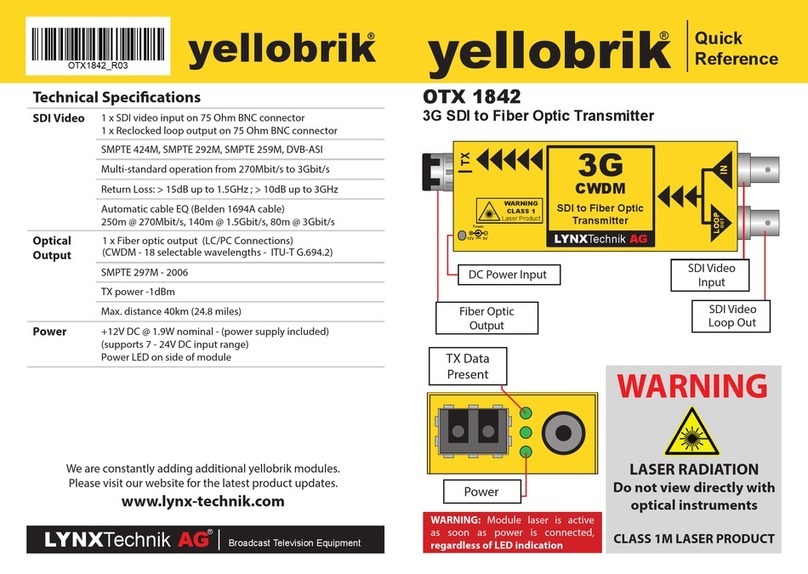
LYNXTechnik
LYNXTechnik Yellobrik OTX 1842 quick reference

Belkin
Belkin F8V3080 - TuneCast II Mobile Transmitter user guide

Emerson
Emerson Rosemount OCX 8800 instruction manual
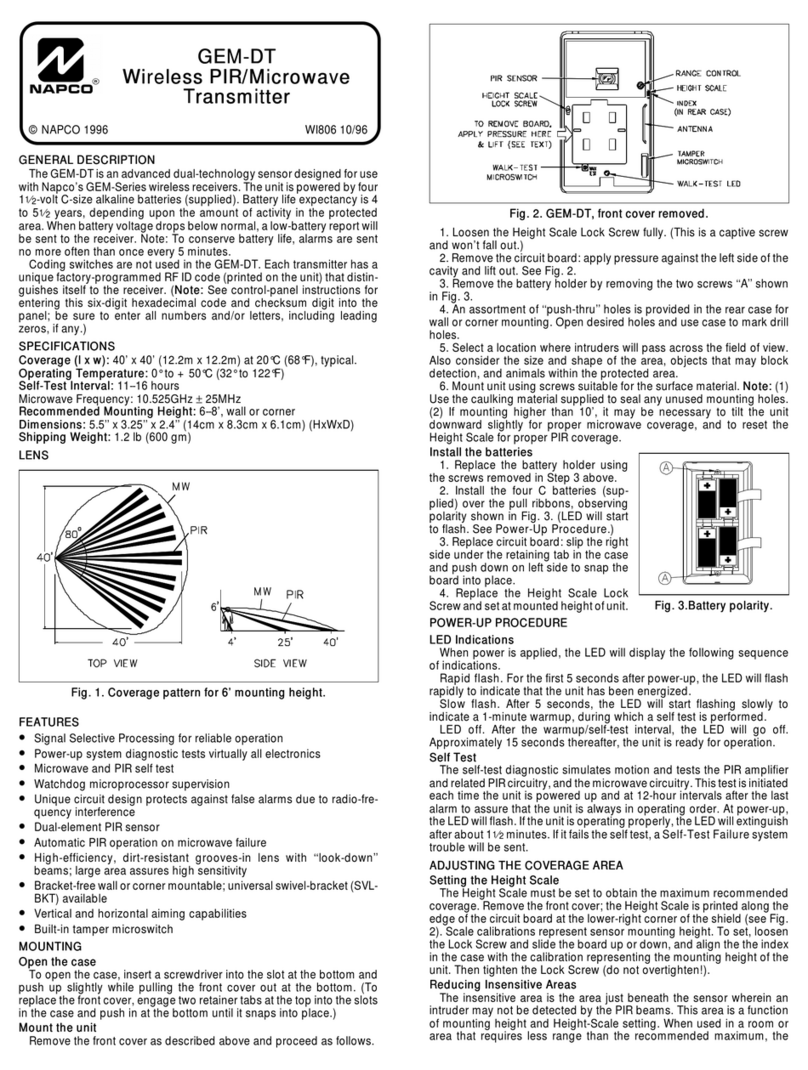
NAPCO
NAPCO GEM-DT quick guide
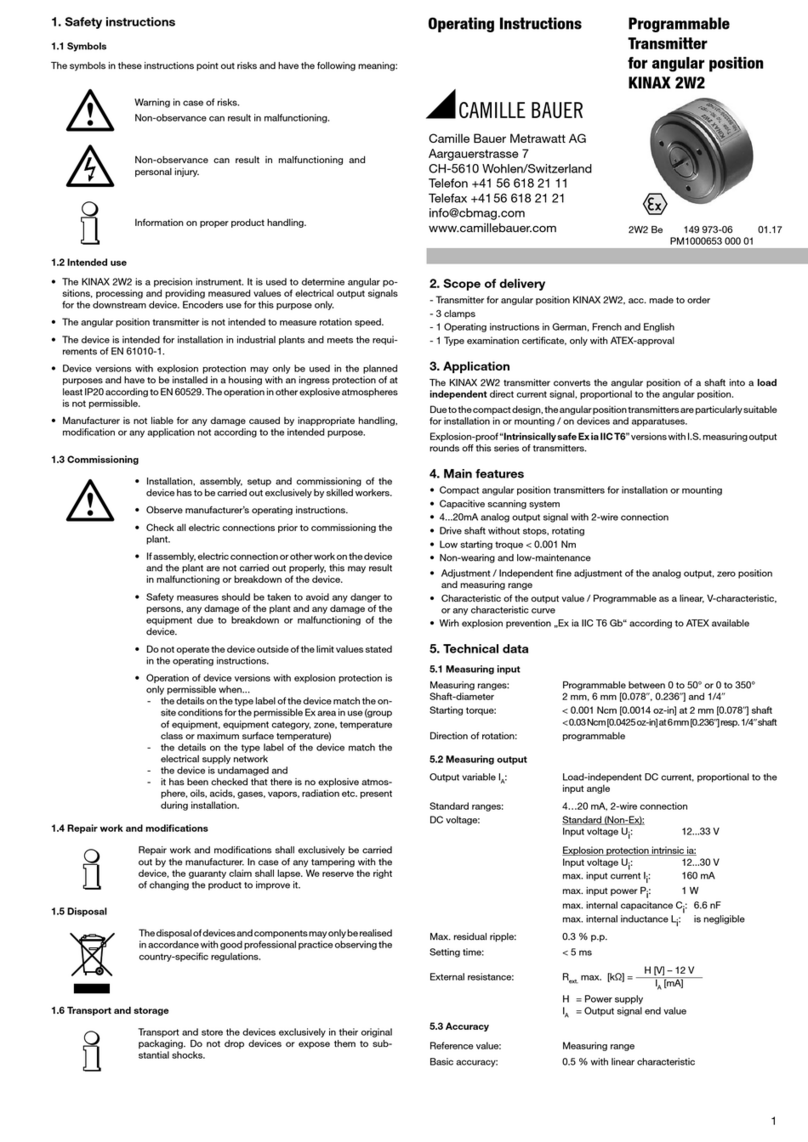
Camille Bauer
Camille Bauer KINAX 2W2 operating instructions
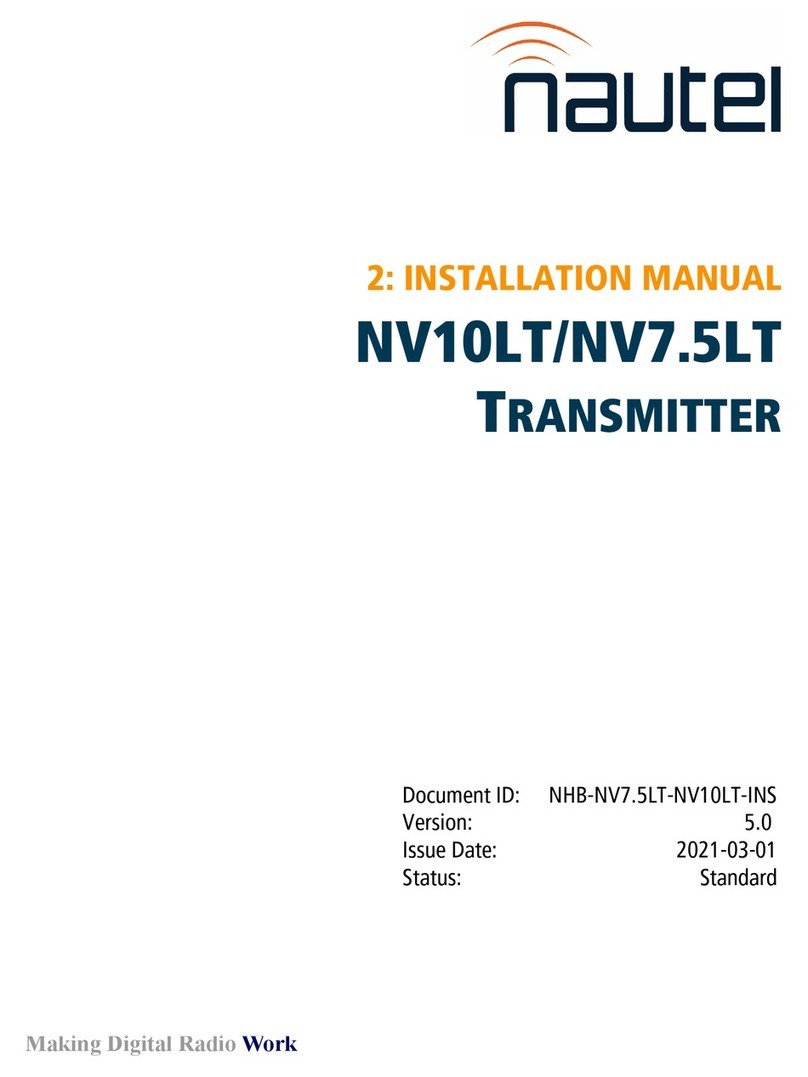
Nautel
Nautel NV10LT installation manual
